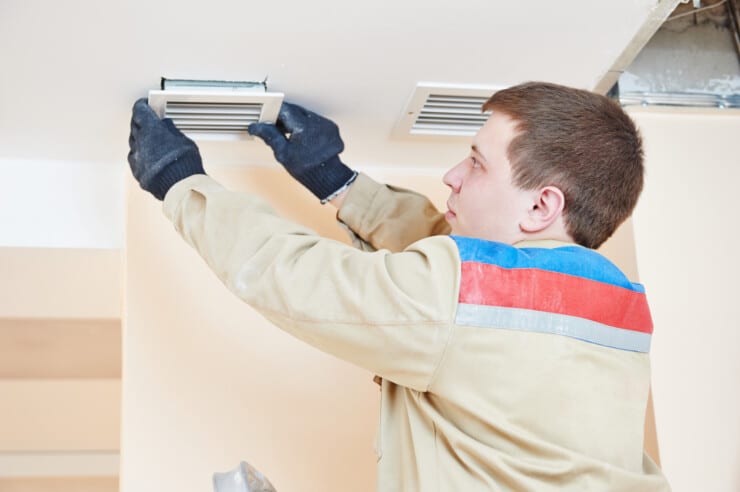Why Is There A Strange Wax Smell In My House?
Many of us have, at one time or another, noticed an odd scent of wax persisting in our living areas.
But why does it happen? And more importantly, how can we get rid of it?
In this article, we’ll dive headfirst into the many reasons of why this could be.
Identifying The Source Of The Odor

First things first: It’s important not just to sniff around aimlessly but also to follow a methodical approach when searching for the source of the strange wax scent.
Begin by retracing your steps and considering any recent changes or additions you’ve made within your living space.
Have you bought new candles recently?
Perhaps utilized beeswax products like food wraps or furniture polish?
Pay close attention to areas where these items are stored, as they could potentially be releasing their natural waxy aromas into the air.
While we may have focused primarily on obvious sources so far, there is always a chance that something more obscure might be responsible for the peculiar olfactory sensation invading your sanctuary.
Unusual smell sources can include old forgotten candles tucked away in cupboards or drawers, faulty electrical wiring melting plastic insulation (which can emit a waxy odor), or even certain plants and flowers giving off unexpected scents.
Potential Causes Of Wax-Like Smells
If you’re wondering about the peculiar wax-like smell in your house, look no further than some potential causes that might be hiding right under your nose.
First and foremost, consider any candles or wax melts you may have used recently.
While these products are designed to emit pleasant scents, they can sometimes leave a residual odor that lingers even after they’ve been extinguished or removed.
If you’ve tried using wax alternatives for various purposes around the home – such as furniture polish made from beeswax – it’s possible that these substitutes could also contribute to the unusual fragrance.
Another cause worth investigating is scent triggers within your environment.
It’s not uncommon for certain smells to evoke memories of other experiences with similar odors.
For example, if you previously encountered a strong wax-like aroma at an event or location (such as visiting a candle shop), your brain might associate this smell with those past situations whenever it detects something remotely similar.
This means that even subtle hints of waxy fragrances could prompt your mind to perceive them much more intensely than they actually are.
So before jumping to conclusions about bizarre olfactory sensations in your home, take time to reflect on whether there might be external factors influencing how you interpret specific scents.
Now that we’ve covered some likely explanations for the mysterious wax-related odor pervading your living space, remember that pinpointing its origin will require keen observation skills and perhaps even a bit of detective work on your part.
Try keeping track of when and where you notice the smell most strongly; armed with this information, you’ll be better equipped to identify items or areas responsible for producing it.
And once the source has been located, simply removing or cleaning up whatever’s causing the unwanted scent should help restore freshness and tranquility throughout your abode!
Addressing Air Quality And Ventilation

Now that you’ve identified the strange wax smell, it’s time to tackle air quality and ventilation in your home.
A comfortable living environment is essential for maintaining good health and well-being.
Poor air circulation can lead to an accumulation of harmful pollutants, allergens, and unpleasant odors.
So let’s dive into some effective ways to improve the indoor atmosphere for a fresher, healthier space.
One powerful tool at your disposal is air purifiers.
These handy devices work by trapping contaminants like dust mites, pollen, pet dander, mold spores, and even certain chemicals present in the air.
This helps reduce allergy symptoms and respiratory issues while also eliminating unwanted smells from lingering inside your home.
When choosing an air purifier, make sure to consider factors such as room size, filter type (HEPA filters are highly recommended), noise level, energy consumption, and any additional features suited to your specific needs.
Another crucial aspect of achieving optimal indoor conditions is proper humidity control.
Both excessively damp or dry environments can cause discomfort and pose potential risks to our health.
High humidity levels might encourage mold growth and increase the presence of dust mites – common triggers for those with allergies or asthma.
On the other hand, low humidity could result in dry skin or irritated sinuses.
To maintain a balanced atmosphere within your home, invest in a hygrometer to monitor moisture levels regularly.
This will help you determine if you need a dehumidifier or humidifier based on current readings.
Keep in mind that ideal indoor humidity typically ranges between 30-50%.
With these strategies implemented effectively alongside regular maintenance checks on heating/cooling systems and keeping windows open when possible for natural ventilation – you’ll be well on your way toward mastering clean and fresh indoor living!
Effective Cleaning And Odor Removal Techniques
Funny enough, I faced a similar issue not too long ago.
The strange wax smell in my house was driving me crazy, until I discovered that it was caused by an old candle left unattended.
With the right cleaning products and odor solutions, you can easily eliminate this peculiar scent from your living space.
First off, let’s tackle the source of the problem.
Thoroughly inspect your home for any candles or wax remnants which may be contributing to the smell – don’t forget to check hidden corners and storage areas as well.
Once identified, remove these items and give the affected surfaces a good wipe down with an all-purpose cleaner.
You might also want to consider investing in some high-quality air purifiers or even natural alternatives like plants known for their air-purifying properties, such as spider plants or snake plants.
Next up: Odor solutions!
After addressing the root cause of the wax smell, shift focus on refreshing your indoor atmosphere.
Open windows and doors to allow fresh air circulation throughout your home.
Utilize pleasant-smelling cleaning products when wiping down surfaces; opt for those containing essential oils like eucalyptus or lavender.
For fabrics (curtains, carpets), sprinkle baking soda generously over them before vacuuming – this will help absorb any lingering odors without harming the material itself.
Now that we’ve covered effective techniques to clean and combat unwanted smells in your home, apply these methods consistently whenever needed.
Not only will you create a more inviting environment but also establish mastery over maintaining a neat and pleasant living space!
Preventing Future Wax Smells In Your Home

Preventing future wax smells in your home is easier than you might think.
It’s all about finding the perfect balance between creating a pleasant atmosphere and avoiding overpowering scents.
By being mindful of the products you use, making simple swaps, and maintaining good housekeeping habits, you’ll soon master the art of keeping your living space free from unwanted odors.
One way to avoid wax smells is by exploring wax alternatives for candles or other household items that produce fragrance.
Soy candles, beeswax candles, and even electric candle warmers can be great substitutes for traditional paraffin wax options.
These eco-friendly solutions not only release fewer chemicals into the air but also tend to have longer burn times – meaning more value for your money!
For scented products like air fresheners and diffusers, consider using essential oils instead of synthetic fragrances.
Essential oils are derived from natural sources such as plants and offer various therapeutic benefits along with their appealing aromas.
Another tip to keep those pesky wax smells at bay is regular cleaning of areas where candles or any scented products are frequently used.
This includes wiping down surfaces, washing fabrics that may have absorbed lingering odors (like curtains or throw pillows), and airing out rooms after burning candles or using other scent-emitting items.
It’s crucial to remember that prevention is key when it comes to mastering a fresh-smelling home environment: staying proactive will make all the difference in ensuring an inviting ambiance without any unexpected surprises!
Frequently Asked Questions
Can A Wax-Like Smell Be Harmful To My Health Or Indicate A Dangerous Situation In My Home?
While most wax-like smells are typically harmless, they can sometimes indicate underlying issues that require attention.
Common sources of such odors may include scented candles, air fresheners, or even household cleaning products.
However, on rare occasions, these fragrances might also signal problems like electrical malfunctions or mold growth – both warranting immediate investigation for your safety and well-being.
Are There Any Specific Products Or Materials In My Home That Are More Likely To Emit A Wax-Like Smell?
There are various wax-producing materials and objects in your home that could be responsible for emitting a wax-like smell.
One of the most common culprits is scented candles, which can release their fragrance even when they’re not lit.
There may be other sources such as wax paper, crayons, certain cosmetics or skincare products containing waxes, and furniture polish.
How Long Should It Take For The Wax Smell To Dissipate Once The Source Has Been Identified And Addressed?
Once you’ve identified and addressed the source using odor detection techniques and implemented effective wax smell solutions, it typically shouldn’t take too long for the scent to dissipate.
However, it would still depend on factors such as ventilation, room size, and even humidity levels.
To speed up the process and achieve that fresh-smelling oasis you crave, be proactive in airing out rooms by opening windows or using fans to circulate air.
Are There Any Professional Services That Can Help Identify And Eliminate The Source Of A Wax-Like Smell In My Home?
There are professional services available to help you identify and eliminate the source of a wax-like smell in your home.
These experts often employ advanced wax removal techniques and may even use ‘professional sniffers’ – individuals with highly sensitive senses of smell trained to detect specific odors.
By enlisting their assistance, not only will you save time and effort in locating the root cause of the mysterious scent, but you’ll also be one step closer to mastering the art of maintaining a fresh-smelling living space.
Can Weather Conditions Or Seasonal Changes Contribute To The Development Of A Wax-Like Smell In My House?
The weather impact on indoor scents can be quite significant as fluctuations in temperature and humidity levels may intensify certain smells or cause previously unnoticed odors to become more apparent.
Seasonal scents such as blooming flowers, damp leaves, or even specific decorations like candles can play a role in creating that mysterious wax-like aroma.
Final Thoughts
A strange wax smell in your home could be harmless or ir could signify an issue that needs addressing.
It’s crucial to investigate and identify the source for peace of mind and safety.
Don’t hesitate to seek professional help if you’re unable to pinpoint the cause yourself.
Remember, better safe than sorry when it comes to potential hazards in your living space, especially when weather conditions or seasonal changes can play a role too.







